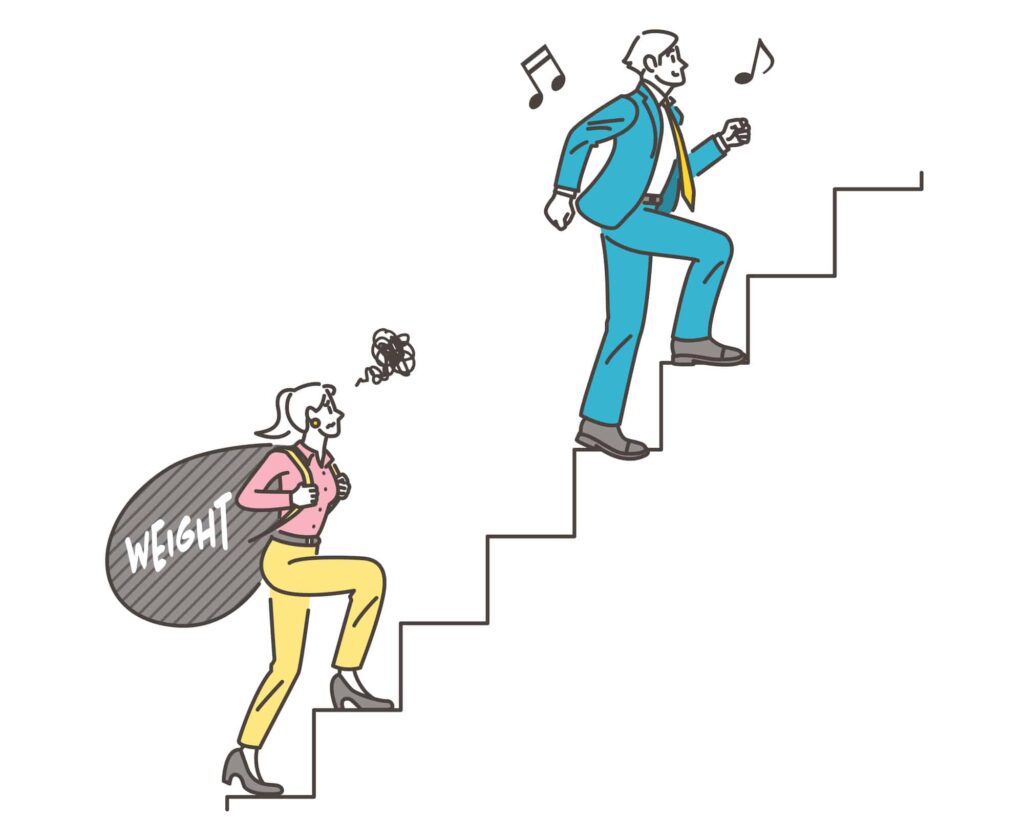[ad_1]
Japan’s Gender Gap in the Workplace

Japan’s rank in economics was lower than the previous year due to the lower scores in labor participation and managerial roles. Economics is evaluated in the following five sub-items:
- Rate of labor participation (Rank: 83 / Score: 0.750)
- Wage gap between men and women (Rank: 76 / Score: 0.642)
- Gender inequality in income (Rank: 100 / Score: 0.566)
- Gap between men and women in managerial roles (Rank: 130 / Score: 0.152)
- Gender gap in number of professions & technical positions (Score/rank not listed) [2]
Japan’s gender gap in wages is notably wider in comparison to other countries. Japanese women are less likely than men to see significant raises throughout their careers. Although starting monthly wages for men and women average around 214,600 and 209,200 yen respectively (about a 5,400 yen difference), by the time they reach their late 50s, that gap explodes to a massive 149,100 yen difference, with men earning about 420,100 monthly and women only 271,100 yen. [5]
(Note that this study only accounts for regular/full-time roles. And although 77% of Japanese women do work, the majority of them are ‘non-regular’ roles. This includes temporary, part-time, and side jobs with limited-to-no security or benefits, and low pay).
Another factor to consider is the recent coronavirus pandemic. When lockdowns resulted in closed schools and workplaces, women were more likely to spend a longer time at home caring for their children. Even as things slowly return to normal, the unemployment rate for women remains among the highest. The WEF even suggested that the pandemic has set back gender parity by a whole generation. [3]
In an attempt to diminish this gap, the labor ministry recently revised an ordinance on July 8th, making it a new requirement for large businesses (over 300 employees) to disclose gender gaps in salaries. The aim is to encourage businesses to reduce the gender gap and to promote women in the workplace. [4]
Japan’s Gender Gap in Politics
Political participation is evaluated in the following three sub-items:
- Proportion of women in the Diet (House of Representatives) (Rank: 133 / Score: 0.107)
- Number of female Cabinet members (Rank: 120 / Score: 0.111)
- Term of office of female Prime Minister in past 50 years* (Rank: 78 / Score: 0) [2]
*Note that Japan has never had a female Prime Minister.
Unfortunately, while politics seems to hold the biggest key to improving Japan’s gender gap, it also poses the biggest challenges. Japanese political parties have not been very proactive in encouraging female participation or sponsoring female candidates. And although the Gender Parity Law was passed in 2019, which set a gender quota in an attempt to increase the number of women elected to office, it lacks a proper enforcement mechanism, resulting in only meager improvements, if any.
On a positive note, about a third of candidates (a record 181) in last Sunday’s Upper House election were women, marking the highest proportion since Japanese women won the right to vote in 1946. However, with the LDP (who strongly opposes the gender quota) in control of the National Diet, it won’t be an easy battle. [4][5]
(You can read more in-depth about Japan’s gender gap in politics, and Japan’s 2020 ranking, in the 2020 round-up by our founder Jay Allen HERE).

Closing the Gap
According to the WEF, at the current rate, it could take up to 132 years before we manage to close the gender gap across the world.
The Gender Gap Report offers a way to track the world’s progress in achieving gender equality throughout the years. Each country’s goal is to improve that score every year until it reaches number 1. However, in comparison to the report’s inception in 2006, Japan’s score has only improved by a mere 0.005. (Japan’s score was 0.645 in 2006, 0.652 in 2020, and this year, 0.65). And while one can argue that an improvement is still an improvement, there is clearly much more to be done if Japan hopes to catch up… and if any of us hope to see a truly equal world in our lifetime.
Resources
[1] [詳細版] ジェンダーギャップ指数 116位 国内の動きは. NHK
[2] ジェンダーギャップ指数2022、日本は116位。政治・経済分野の格差大きく、今回もG7最下位. Huffington Post JP
[3] ジェンダーギャップ、経済分野で拡大 コロナ禍からの回復遅れ影響も. 朝日新聞
[4] (社説)女性当選最多 「均等」へ さらに努力を. 朝日新聞
[5] Japan’s stubborn gender inequality problem. East Asia Forum
[6] Global Gender Gap Report 2022. World Economic Forum
[ad_2]
Source link



